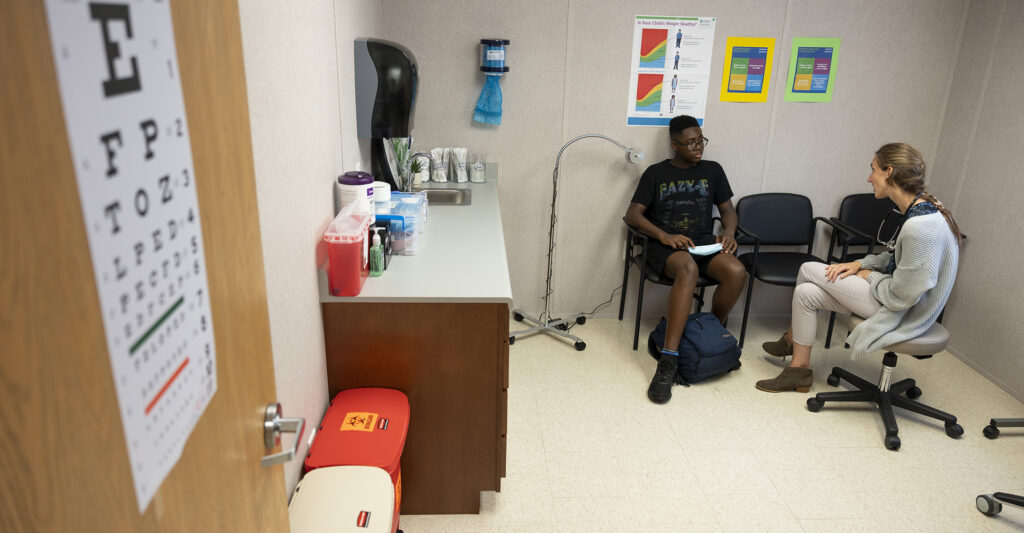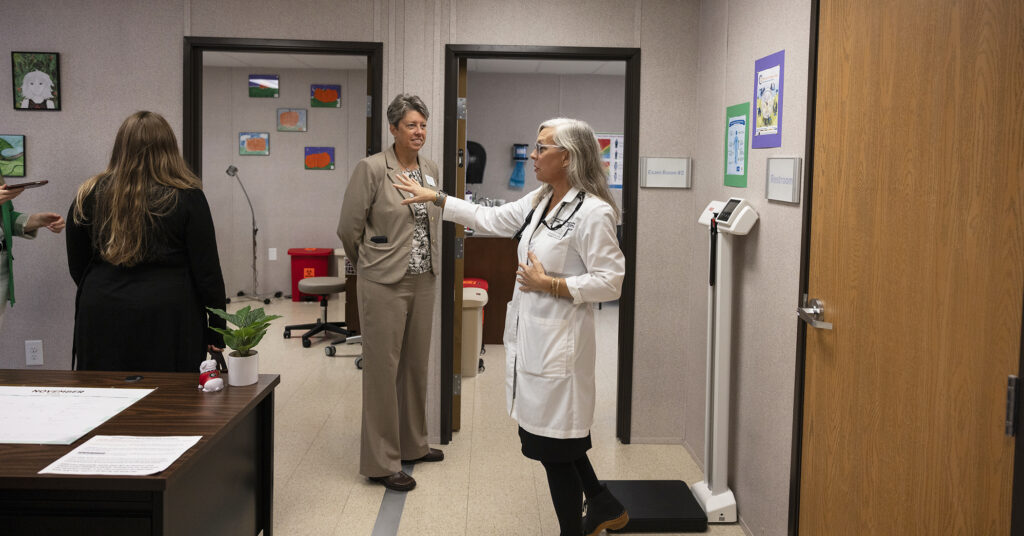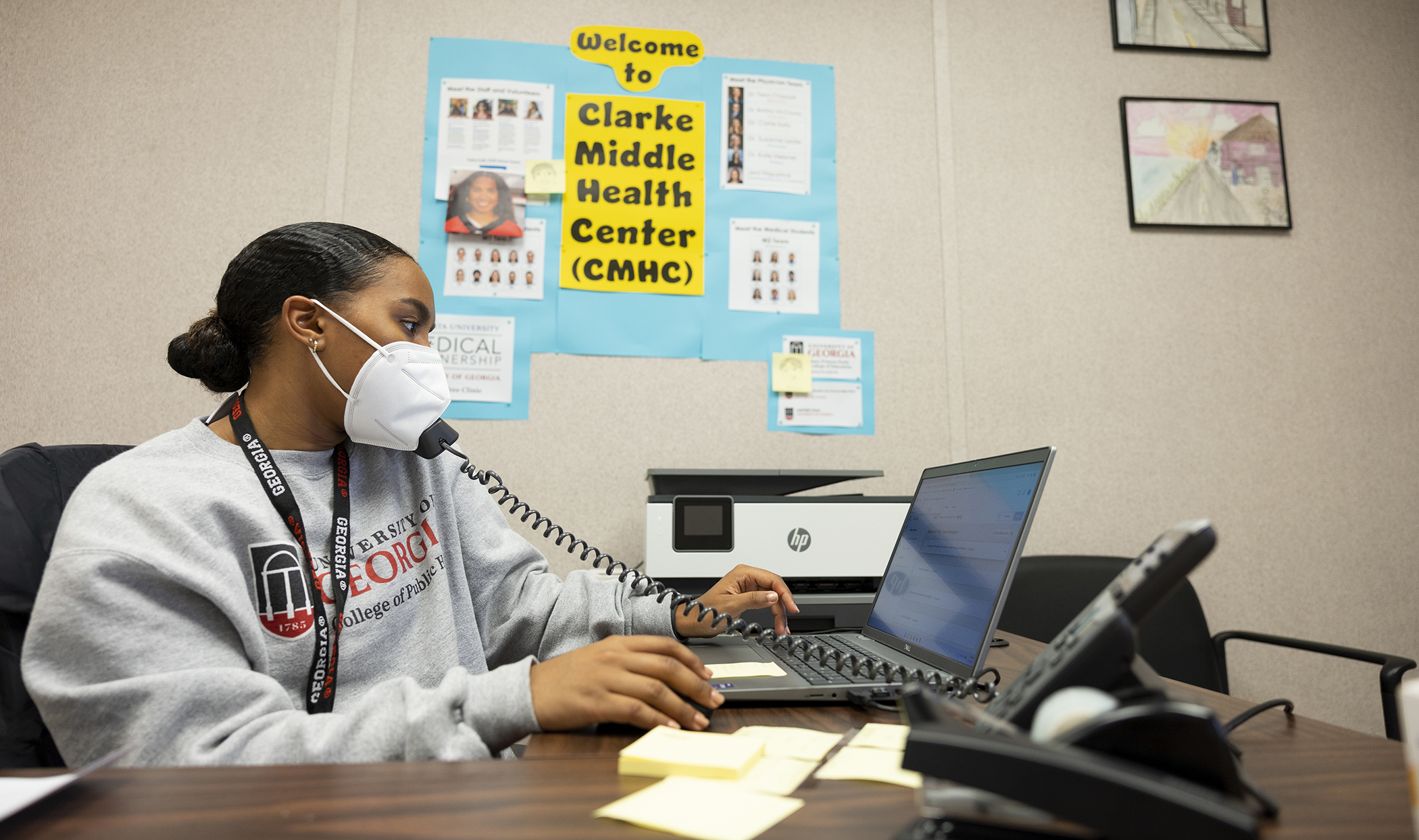When a student at Clarke Middle School or Alps Road Elementary School is feeling under the weather, they can walk to an on-campus health center for a checkup and tests, and—if they need it—additional services that range from mental health care to legal support.
The Clarke Middle Health Center, a partnership between the University of Georgia and the Clarke County School District, provides free care to all CCSD students, their families and their teachers. Since the clinic opened in September, more than 300 patients, including Clarke Middle student Kameron Barnett, have benefited from the easy access to care.
“He first had a sports physical [with AU/UGA Medical Partnership faculty and students] and returned for a checkup with bloodwork,” said Barnett’s grandmother, Strien Barnett. “It’s helpful for them to have the clinic right there on the school campus. He can walk right across from the school and get what he needs.”

The center is staffed by an interdisciplinary team of UGA students and faculty. Patients are greeted by a College of Public Health graduate student along with UGA undergraduate pre-medical students, who staff the front desk and build strong relationships with students and their families. Then, patients are cared for by first-, second- and third-year AU/UGA Medical Partnership students under Medical Partnership faculty supervision.
If needed, patients meet with School of Social Work graduate students and faculty or receive referrals to the ASPIRE Clinic at the College of Family and Consumer Sciences and La Clínica in LaK’ech through the Mary Frances Early College of Education, allowing the clinic to treat the whole patient. UGA’s Community Health Law Partnership Clinic also consults with students and families, addressing issues related to immigration and housing and helps train law students.
“We know that some of the social determinants of health have legal solutions, said Jason Cade, J. Alton Hosch Professor of Law and Community Health Law Partnership clinic director. “We provide excellent training [to UGA students] and fulfill the university’s mission of service.”
The health center grew out of existing relationships between CCSD and the Medical Partnership, including work to provide thousands of COVID-19 tests and vaccinations.
“Clarke County School District is extremely fortunate to work with the Augusta University/University of Georgia Medical Partnership to provide much needed health care services at no cost for our students, staff and families through the Clarke Middle Health Center,” said CCSD Superintendent Robbie P. Hooker.

“This model takes our partnership with UGA to the next level in that we are also able to offer free legal and counseling services. This cutting-edge approach to addressing the root causes of childhood illness and health issues through counseling and legal assistance is the kind of innovative approach that is transformative for our students and community,” he said.
The clinic has provided more than $66,000 in free medical care, and nearly three-quarters of patients have returned to class after their visit, helping CCSD accomplish its goal of reducing absenteeism.
Anna Schramski, a third-year medical student who is also a UGA and Cedar Shoals High School graduate, has seen how the clinic has improved health care services, and she believes it can support CCSD students’ career development.
“There will be a lot of gaps this program can fill—well-child visits and mental health care,” she said. “Also, what a cool place to have in the school district’s backyard. Kids can see people in medicine who they look up to and learn about career paths in medicine.”
Dr. Suzanne Lester, an associate professor and medical director of the Athens Free Clinic, has led the efforts to establish the Clarke Middle Health Center.
“It is such a great university-community partnership. The medical students are seen as an asset to the community, and their interactions with the patients are going to have an indelible impact on how the medical students approach all patients in the future,” Lester said. “We are teaching medical students to consider the full context of the patient, remove barriers and improve health outcomes. It’s going well, and now I’m looking for ways to expand our impact.”


